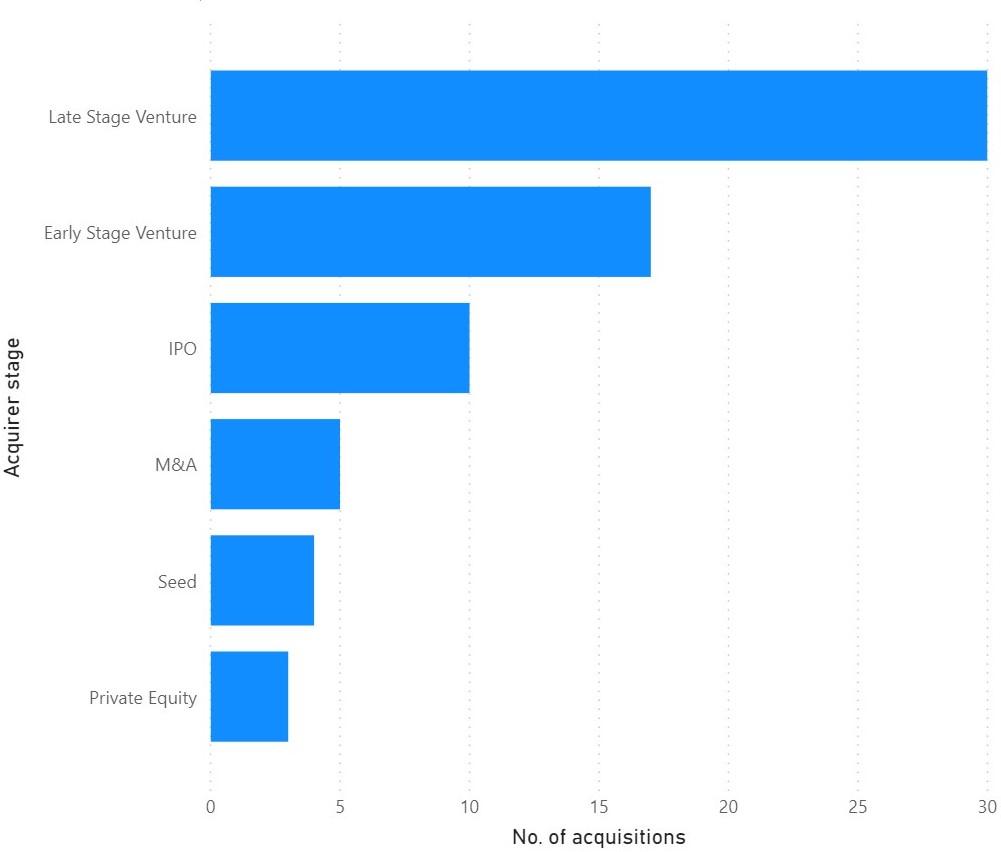Mergers and Acquisitions play an important role in the growth of a company. We’ve all seen them in the light of bigger companies where, often, the bigger company acquires another to further advance the business’ goals and growth. A common misconception, however, is that acquisitions are meant only for the wealthy, big companies whereas startups and other small to mid-size companies need to grow their companies organically. Small acquisitions for both early and late-stage startups (as a buy-side) can help them grow inorganically at a much faster pace than alone.
Are early stage M&A’s largely a distress sale?


Most people associate a merger or acquisition with the fact that the company might not be doing well financially and therefore is looking for a way out. While this may be true in some cases, most mergers and/or acquisitions are a play to improve the product, operations, bring in competencies in terms of leadership or technology and accelerate the growth of the company. The focal point of any merger or acquisition is to achieve synergies – where the two companies combined together (whole) are able to achieve more than each of the companies individually.
Let’s analyze the acquisitions that have taken place in India in the last two years. Data of the last two years have shown that most acquisitions have in fact taken place as a strategic growth option vs. a distress sale. Most of these acquisitions were made by Late Stage or Early Stage Ventures vs. PE/IPO funded companies. Many have also been done by companies in a funding stage of M&A themselves as a play to improve their product or service and incorporate new technology.


Why do acquisitions take place?
While looking at acquisitions, it is necessary to understand the perspectives of the buy side as well as the sell side and the benefits it presents to them.
| Buy Side Perspective | Sell Side Perspective |
|---|---|
| Grow the market through complementary/adjacent offerings | Survive competition in the industry |
| Expand customer and geographic access | Better opportunities with the buyer instead of working alone |
| Take over competitors | Not able to scale as planned |
| Acquire new skills, domain knowledge, new technologies and entrepreneurial talent | Not able to raise right amount of funds at the right time |
There is a lot of benefit for acquisitions among smaller companies. Deals, done especially at the local or regional level can open up whole new demographics. Secondly, small companies can use each other’s resources and fill up weaknesses to achieve their goals. The key, as with partnerships, is to look at complementary goods and services, and acquire companies that can help you fill the gaps in adjacent markets.
An example of a takeover in the startup space is that of Runnr by Zomato. About 92% of Zomato’s orders at the time were fulfilled by third party logistics services and restaurant partners, while only the remaining 7-8% was self-fulfilled. Through this deal Zomato, looking to build its own fleet would be able to self-fulfill its orders with Runnr – an independent logistics company – which would also help them expand their operations in the UAE. Runnr, after the acquisition, would continue to function as an independent logistics firm delivering in other segments and would continue to retain its management team.
Another is that of Adorithm by SyncMedia & Adtech. SyncMedia uses AI and ML to help advertisers understand viewership patterns and measure the performance of their campaigns (TV and digital), and Adorithm uses modern day AI and ML algorithms to help advertisers, ad agencies and start-ups drive better performance of their media spends. SyncMedia, in its $1M acquisition of Adorithm, would absorb its team, product and intellectual property. With the acquisition, SyncMedia would be able to cater to its customers (the likes of which include HUL, Vivo, Apple, H&M, etc.) with deep insights backed by advanced AI & ML capabilities. This helps further the problem that Syncmedia is trying to solve – companies investing good amounts of money in marketing but evaluating performance and ROI traditionally.
Acquisitions across industries


In our analysis of the acquisitions done in India by Indian companies in the last two years, we’ve come to find that the most no. of acquisitions were done in the Internet, HealthTech and Software/IT sectors.
There have also been some major acquisitions in the AdTech and Automotive industry. As traditional methods of marketing analysis are proving to be insufficient for big companies, many are turning to the upcoming AdTech sector to analyze through AI, Deep Learning and other technologies the ROI and effectiveness of their campaigns. This is why in the last two years there have been quite a few acquisitions in the AdTech industry, an important one being that of Adorithm by SyncMedia & Adtech. In the Automotive industry, many acquisitions have concentrated on Vehicle care, online appointments and bookings.
EdTech, FinTech and the PropTech industries have also seen some significant acquisitions. EdTech, which has seen a slow but good rise in investments and M&A in the last few years, has now been significantly propelled further by the Pandemic. There are many companies that are joining hands to support the needs of the students while ensuring a holistic approach to education.
To sum up
To sum up, we would like to quote Roger Agnelli, a Brazilian entrepreneur, Investment Banker and Corporate leader (voted in 2013 by HBR as the world’s 4th best performing CEO). He had said “When you have mergers and acquisitions that improve the quality of your product and the ability to grow and bring better efficiency, it’s good for all.” Acquisitions are a great strategic play, and done right, can open up the right opportunities and consequently rewards. It goes without saying, however, that acquisitions are no child’s play and when considering either buying or selling it’d be wise to get professional help.If you are an early-stage startup looking for exit opportunities, partnerships, or fundraiser, or a corporate or late-stage startup looking to strategically acquire small companies, you are in the right place. We are a digital investment banking platform, helping startups and corporates in M&A, partnerships, acquihires and fundraise activities. Visit www.growthpal.com for more information or contact us directly at [email protected]. We would love to hear from you!









